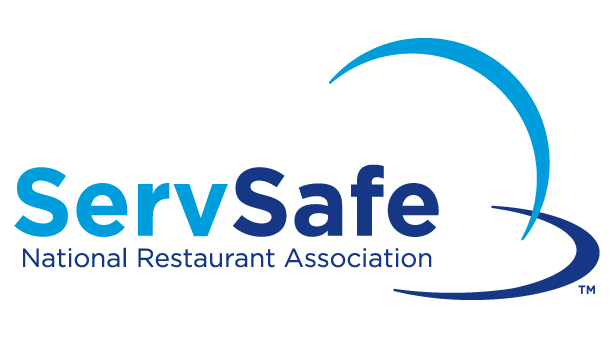Key Responsibilities and Training for Striving ServSafe Managers in the Food Sector
Key Responsibilities and Training for Striving ServSafe Managers in the Food Sector
Blog Article
Comprehensive Food Handlers Educating for Health and Safety And Security
In today's swiftly advancing food solution landscape, comprehensive food handlers training has emerged as a crucial component for making certain hygiene and security. By instilling necessary techniques associated with hand health, food storage space, and sanitation, this training not only reduces the danger of foodborne health problems however likewise reinforces conformity with regulatory standards. The implications of such training expand beyond mere conformity; they discuss public health and customer trust fund. The efficiency of these training programs can vary dramatically. What elements really establish their success in promoting a culture of safety?
Significance of Food Safety And Security Training

Additionally, food security training aids to make sure that staff members are aware of existing regulations and standards, which are important for preserving functional licenses and avoiding expensive fines. Routine training sessions likewise function as a system for reinforcing finest techniques, thereby lowering the probability of human mistake, which often works as a leading root cause of food contamination.
In addition, buying food security training can improve a facility's track record, as customers progressively focus on eating experiences that mirror high safety standards. Such positive procedures not just shield customers but also add to the lasting success of food companies. In recap, detailed food safety training is a vital component of food service operations, directly impacting both public wellness and service sustainability.
Secret Concepts of Hygiene
Keeping high criteria of health is crucial in any food handling setting to protect against contamination and make sure the safety of consumers. The key principles of hygiene include a number of critical methods that food trainers need to consistently apply.
First, hand hygiene is critical; food trainers need to clean their hands completely with soap and water prior to and after dealing with food, in addition to after utilizing the bathroom or touching any type of potentially infected surface areas. Devices and surfaces need to be routinely cleaned and sterilized to eliminate pathogens. This consists of tools, reducing boards, and kitchen counters, which must be kept in a clean condition.


Proper food storage is also crucial; raw foods should be kept separately from cooked or ready-to-eat products to avoid cross-contamination. servsafe alcohol. Additionally, maintaining ideal temperature level controls is critical; perishable products need to be maintained secure temperature levels to inhibit bacterial growth
Last but not least, personal health can not be ignored. Food trainers ought to use tidy clothing, use hair restraints, and stay clear of functioning when ill. By sticking to these vital principles of hygiene, food trainers can dramatically lower the danger of foodborne ailments and advertise a more secure dining experience for all consumers.
Typical Foodborne Ailments
Although many foodborne ailments can be avoided through appropriate health and secure food managing practices, they stay a significant public health and wellness issue. Foodborne microorganisms can lead to a selection of health problems, varying from light intestinal distress to serious issues and also fatality.
Usual foodborne health problems check my source consist of salmonellosis, triggered by Salmonella germs, often linked to undercooked fowl and eggs. Another prevalent health problem is listeriosis, connected with raw dairy products and ready-to-eat meats, which can be particularly harmful for immunocompromised people and expecting ladies. Norovirus, often gotten from contaminated food or surfaces, is recognized for its rapid spread and capability to trigger break outs in public settings.
Escherichia coli (E. coli) infection, significantly connected with undercooked ground beef and polluted fruit and vegetables, can lead to severe abdominal aches and kidney failure sometimes. Furthermore, Clostridium perfringens, frequently found in large amounts of food that are poorly saved, can create food poisoning with signs showing up quickly after intake.
Understanding these illnesses is vital this link for food trainers, as understanding can dramatically lower the danger of contamination and shield public wellness. Proper education and training are vital parts in combating foodborne diseases.
Ideal Practices for Food Handling
Efficient food handling practices are essential in protecting against the spread of foodborne ailments. Proper hand hygiene is essential; food handlers need to clean their go to my site hands extensively with soap and water before and after dealing with food, specifically raw meat or poultry. This basic action significantly decreases the risk of cross-contamination
Secondly, preserving appropriate food storage temperatures is vital. Subject to spoiling items should be stored at or below 40 ° F(4 ° C) to inhibit bacterial development. Furthermore, cooked foods should be kept over 140 ° F(60 ° C) until served.
Thirdly, making sure sanitation of surface areas and tools is essential. Consistently sterilize counter tops, reducing boards, and utensils, specifically after preparing raw foods. Use separate cutting boards for raw and ready-to-eat foods to better minimize contamination risks.
Moreover, when preparing food, it is essential to follow the principle of "very first in, first out" (FIFO) to handle stock efficiently and minimize perishing. Always adhere and check out to food product labels for secure cooking temperature levels and handling guidelines. By applying these best practices, food trainers can significantly enhance food security and secure public health.
Executing a Security Culture
Creating a safety and security culture within a food managing environment is vital for cultivating a commitment to food security amongst all personnel. This culture highlights the relevance of food safety and security as a common obligation, encouraging workers to prioritize hygiene techniques regularly.
To implement a safety and security society, companies ought to start by offering thorough training that attends to food handling procedures, possible hazards, and the significance of personal health. Training sessions should be interactive and customized to the details duties of team member, making sure importance and engagement.
In addition, leadership plays an important role in developing this society. Monitoring must model secure methods and interact the relevance of food security regularly. Acknowledging and compensating employees who support safety and security requirements can even more strengthen these habits.
Furthermore, open communication networks should be established, allowing staff to report security problems without concern of effect. Routine safety and security audits and responses sessions can assist identify areas for renovation and reinforce accountability.
Eventually, growing a safety and security society not just enhances conformity with food safety and security guidelines but also safeguards public wellness, cultivates employee spirits, and adds to the general success of the food handling establishment.
Conclusion
To conclude, extensive food trainers training plays a critical duty in promoting health and safety and security within food service establishments. By outfitting employees with crucial expertise about food safety principles, typical foodborne diseases, and best practices for taking care of food, such training significantly decreases health and wellness dangers. Fostering a culture of safety enhances the facility's credibility and straightens with customer expectations for high safety standards, inevitably adding to public wellness protection and the overall success of the food service sector.
In today's rapidly evolving food service landscape, thorough food trainers training has emerged as an essential component for ensuring hygiene and safety.Food security training is crucial for maintaining high requirements in food handling and prep work, with research studies suggesting that correct training can decrease foodborne health problems by up to 30%. In summary, thorough food security training is an important aspect of food solution operations, directly affecting both public wellness and business sustainability.

Report this page